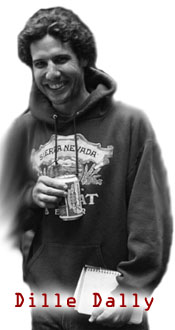I have a confession to make. I watch city hall meetings on public access. I find it all fascinating: the minutiae of planning and zoning regulations; the back and forth between various commissioners, city staff, and stakeholders; the soundtrack of rustling papers; power point slides. I realize this makes me an anomaly.
Most folks would prefer eating glue, I know.
Last Saturday I turned my television to the public access channel in preparation for an indoor cycling session, and found a frequent source and friend of mine on the screen. The speaker was the city’s Bicycle and Pedestrian Coordinator, Annick Beaudet, who’s also a Cat 2 bike racer, presenting to the Austin Design Commission.
Lucky me!
 The subject of Annick’s presentation was a proposed bicycle boulevard, converting one of Austin’s lesser used and more evenly graded downtown through streets into a main thoroughfare for cyclists. Bicycle boulevards use traffic calming devices like roundabouts, medians, and pinch points (where the street narrows and cars must take turns passing) to slow vehicle traffic to a speed more relative to a bike rider. They’re popular in the country’s most bike friendly cities like Portland, Oregon (of course) and Berkley, California (ahem, my hometown). The idea isn’t to disallow cars from using the road, but rather to give cyclists precedence.
The subject of Annick’s presentation was a proposed bicycle boulevard, converting one of Austin’s lesser used and more evenly graded downtown through streets into a main thoroughfare for cyclists. Bicycle boulevards use traffic calming devices like roundabouts, medians, and pinch points (where the street narrows and cars must take turns passing) to slow vehicle traffic to a speed more relative to a bike rider. They’re popular in the country’s most bike friendly cities like Portland, Oregon (of course) and Berkley, California (ahem, my hometown). The idea isn’t to disallow cars from using the road, but rather to give cyclists precedence.
Annick first told me about the bicycle boulevard idea last spring on a bicycle tour of the city’s other signature cycling amenity, the Lance Armstrong Bikeway. As we rode the mix of on and off street bike paths that cuts east and west across town, Annick expounded on her departments other key works, including converting Nueces Street into a boulevard where cyclists could pedal unimpeded through downtown.
Sounds great, I thought, hope it happens in my lifetime.
Then, thanks to fervent support from local leaders, the planning came to fruition sooner than anticipated. The Austin American-Statesman newspaper (to which I frequently contribute) jumped on the story. “Project, still in design, could include periodic obstructions for cars to keep light vehicle traffic from growing,” read the article’s subhead.
Whether intended to rile debate or not, the Statesman piece prompted well over a hundred comments. As is frequently the case with online, anonymous commenting, inflammatory reactions came from both sides:
Since the people of Austin are such environmentalists, why don't we just ban all cars and trucks from downtown and only allow bikes. Sounds pretty dumb but then again we are talking about the City of Austin, wrote Will-I-Am-94.
We should be encouraging MORE bike riding; it's healthy, clean, efficient, and keeps cars off our already packed center city streets. The best cities in America are those that are bike friendly! Austin is making strides in this area, let's keep the momentum going and not waste time, countered danac1.
Other comments, instead of jumping into the petty bikes versus cars fight, voiced serious concerns. The road in question contains a mix of residential, office, and commercial space. One small business owner located on the proposed bicycle boulevard worried less auto traffic would limit customer access and subsequently decrease sales.
However, bicycle boulevards have proven to increase the number of people interacting with an area and even raise property values. Annick’s presentation estimated the bicycle boulevard would bring 2,500 new cyclists through the downtown area. And, according to real estate professionals in Portland, properties along bicycle boulevards are some of the most sought after in the city. Wouldn’t you want to live and shop on a street where people ride and walk, instead of driving?
Furthermore, based on a transportation study from the University of North Carolina, a signature cycling facility like Austin’s bicycle boulevard would create an annual benefit of $321,300 to the city in health care savings, smog reduction, and reduced transportation costs. The city has allocated $350,000 to plan and install the boulevard.
The Austin Design Commission to which Annick—along with the Bike-Ped Department’s young engineering guru, Jason Fialkoff—presented, grilled them on the project, but ultimately expressed enthusiasm for an amenity that will make the city a more enticing place to live, work, and play. Next, Annick, Jason, and the rest of the department will meet with property owners along Nueces Street to make sure all their concerns for the bicycle boulevard are heard and accounted for prior to the design phase.
By this spring, I may be happily pedaling on a bicycle specific street.
Major shifts in the way cities accommodate cyclists don’t happen by accident. Annick has been at this for decades, and is supported by an enthusiastic and engaged local cycling populous. They participate in well-behaved, citywide advocacy rides. They show up to city council meetings when cycling specific resolutions come up. They encourage their friends to start riding—impart experience and help them out with old bike gear.
Some of them go as far as watching public access.